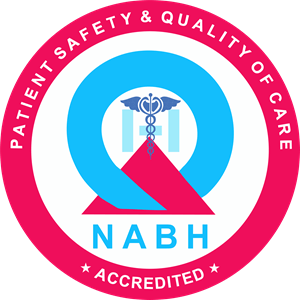Rotator Cuff Tendinitis
What is the rotator cuff?
The upper arm bone (the humerus) is connected to the shoulder by muscles and tendons. Four of these muscle-tendon groups form the rotator cuff, which controls rotation of the arm out away from the body and stabilizes the shoulder. The cuff part comes from the four tendons merging together to form a “cap” or “hood” around the head of the humerus. The head of this bone can be thought of as the ball in the ball-and-socket joint, which is your shoulder. This joint allows motion in a full circle, but this may be limited by tendinitis in the cuff.
What is rotator cuff tendinitis?
Rotator cuff tendinitis is also called impingement, bursitis, tendinopathy. These are all different names for the same problem. They mean that there is pain and swelling of the cuff tendons and the surrounding bursa. The bursa is a soft sack that contains a small amount of fluid and cushions the joint.
What causes rotator cuff tendinitis?
Rotator cuff tendinitis does not occur all at once. Usually it happens over a long period with repeated irritation to an area. It happens more often in people with loose joints, people with abnormal bony anatomy in the shoulder and people who do heavy or repetitive lifting above shoulder level.
Lifting overhead or just moving the arm above the head may cause pinching of one of the tendons of the rotator cuff between the upper part of the arm bone and the acromion (which is part of the shoulder blade). This pinching is called impingement. Other causes include calcium deposition in the tendons or a sudden injury to the shoulder.
What are the stages of rotator cuff injury?
The first warning sign of cuff injury is pain and swelling of the bursa. Shoulder weakness and/or limited range of motion can also occur with long-term irritation or outright injury to the shoulder. The tendinitis can progress to a partial or complete tear of a tendon due to progressive weakening of the fibers.
How is rotator cuff tendinitis diagnosed?
A physical examination of the shoulder by a qualified orthopaedic shoulder expert is the first step. This includes movement and strength testing to evaluate range of motion, pain, weakness and instability. X-rays are useful for ruling out other causes of shoulder pain, such as broken bones, arthritis and other bone diseases. If a cuff tear is suspected, magnetic resonance imaging (MRI) may be used to visualize it. The MRI can detect even small partial tears of the rotator cuff. Another study called the arthrogram, in which dye is injected into the joint, may also be useful for diagnosis.
How is rotator cuff tendinitis treated?
The injured shoulder should be rested until the pain and swelling subside. Then physical therapy is used for gentle stretching and strengthening to preserve full motion of the shoulder. However, exercises above shoulder level should be avoided because they will only continue to pinch the tendons and increase inflammation. Total inactivity is not recommended, however, as it may cause the joint to stiffen and result in a “frozen” shoulder.
Ice: Putting ice bags or cold packs on the shoulder reduces inflammation and pain. Ice should be applied twice a day for at least 20 to 30 minutes. Just massaging an ice cube over the painful area can also help reduce the pain and swelling.
NSAIDs: These aspirin-like drugs (Motrin, ibuprofen, Nuprin, Naprosyn, Advil, Aleve, etc.) can also reduce pain and swelling. There are a number of different kinds available and your doctor can choose the right one for you. These drugs may have some side effects and should be taken only as directed.
Steroids: If other treatments do not work, steroid treatment may be used to reduce inflammation and pain. These drugs can be taken at home as pills or injected directly into the space just above the injured tendons. Injections of steroids can offer long-term pain relief but are used only when they are specifically indicated.
When should you have surgery?
Rotator cuff tendinitis without a cuff tear normally does not require surgery, and treatment as described above is usually enough to cure the inflammation. If pain continues after several months of these treatments and steroid injections have provided only temporary relief, then surgery becomes an option. The most common procedure for rotator cuff tendinitis is called acromioplasty. Using arthroscope (a small camera inserted into the shoulder joint through an incision about the size of a buttonhole), the surgeon can view the affected area and shave the underside of the acromion to increase the space between it and the cuff tendon that is injured. This space helps prevent pinching of the tendon and irritation during shoulder movements. Also, damaged tissue can be removed and minor tears can be repaired.
How long is rehabilitation after rotator cuff repair?
Rehabilitation usually begins the first week after arthroscopic surgery or an open rotator cuff repair. It is very important to follow the program that the surgeon recommends. The physical therapist will demonstrate how to do the exercises to increase range of motion and to build muscle strength. A typical program might start with stretching and some minor strengthening exercises with rubber bands and light weights. It might take up to several months before strength is back to normal, but with hard work and adherence to the recommended program, in most cases a full recovery is likely.



Wow amazing blog layout How long have you been blogging for you made blogging look easy The overall look of your web site is magnificent as well as the content
This article is a perfect blend of informative and captivating.